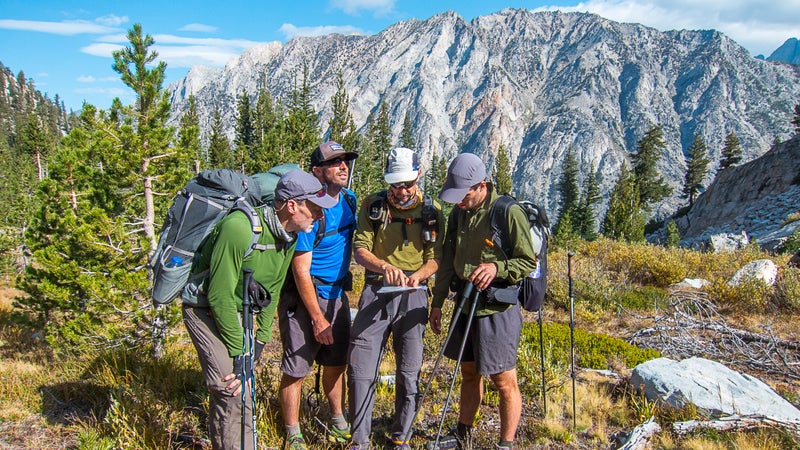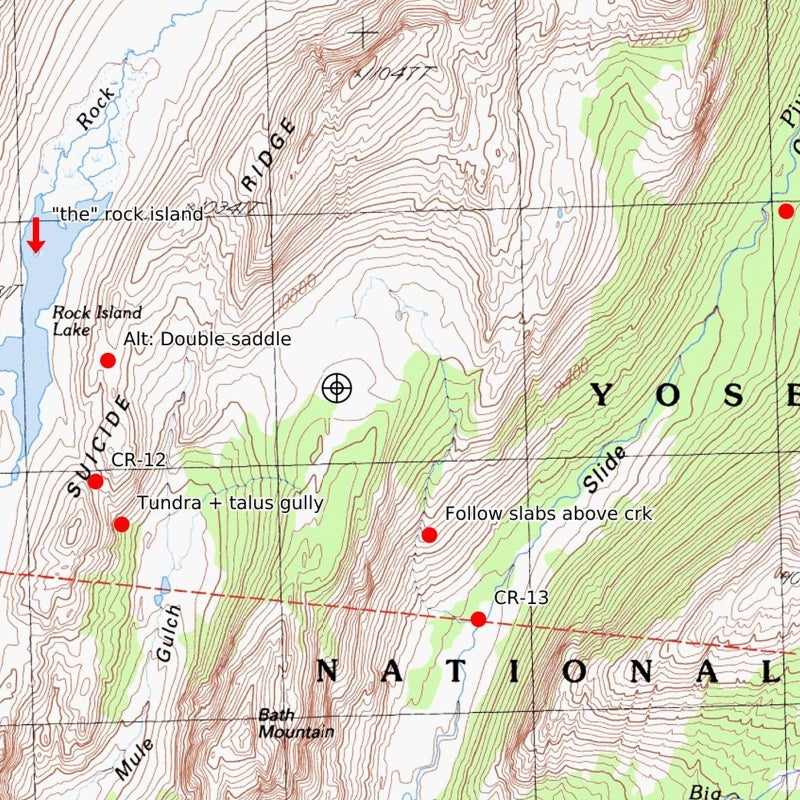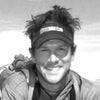While hiking, have you ever gotten turned around, missed a junction, or walked a few minutes (or miles) in the wrong direction? It happens to everyone, especially��newer hikers and backpackers. But you can greatly reduce the risk by developing a sharp mindset and��carrying a few key pieces of equipment.
Tell Me a Navigational Story
When teaching clients on guided trips how not to get lost in the backcountry, I��ask them to tell a story.��This technique��helps put them in the navigator’s mindset. The story consists of three parts, which correspond to the three components of the mentality: where we’ve been (attentive), where we are (present), and where we’re going (anticipating).
I ask clients to illustrate their story on a map��and to prove it with information��from their resources and equipment. If there are discrepancies between the narrative and these tools, clients must revisit their storyline or double-check their instruments.

For example, if the story is that we reached a lake after climbing steeply west for an hour, but in fact we only climbed for 35 minutes and were hiking east, it would be clear that they were not attentive. If the storyteller��thinks we��have arrived at the ford of Return Creek on the Pacific Crest Trail, but our altimeters read 8,800 feet instead of 8,600 feet, and the creek is flowing southeast instead of southwest, they aren’t being present. They aren’t doing a good job of anticipating if they expect to reach a junction after hiking downhill for 15 minutes��but the trail has been flat and we’ve been hiking for ten minutes. These would all be reasons to pause and reevaluate.
It’s sometimes OK��to proceed when the story is not matching up entirely—but do so skeptically. If more information comes in from your tools or your surroundings��that brings up further inconsistencies��in the story, then maybe it’s time to stop and figure things out.
When a navigator is convinced that their story is correct, even though it’s full of holes, it’s called “bending the map.” While it may feel like wasting��more time to get��the story straight right now, in my experience, it’s time well spent.
Case Study
To demonstrate the navigational story, I’ll use an example from California’s��Yosemite High Route.
First, let’s look at the map. Suppose that we’re having this conversation at the gunsight in the middle of the map, and we’re following the red dots from west to east.

Where we have been: we walked along the east shore of Rock Island Lake, crossed Suicide Ridge, descended a steep tundra and talus gully to the head of Crazy Mule Gulch, then climbed moderately in a northeast direction for about 300 vertical feet.
Where we are: we’re standing on the saddle between Crazy Mule Gulch and Slide Canyon, and I can prove this with multiple pieces of evidence. First, the description of this saddle in the is very similar to our current surroundings. The map depicts this saddle as being broad and above tree line, and both are true. Second, from the base of the descent off Suicide Ridge, it took us 20 minutes to get here, which is about right for hiking 0.6 miles off-trail and uphill at altitude. Using my compass, I also found a bearing of 195 degrees to a peak that topographically looks like Bath Mountain, which is consistent with my maps. My altimeter reads 9,920 feet. The map��says this saddle is at about 9,940 feet, which is within the margin of error for my altimeter. Finally, my GPS says that I’m here.
What we’re anticipating: from this saddle, the guidebook instructs us to drop southeast toward��a low-volume creek��and then to use this creek as a handrail (an obvious topographic feature, like a shoreline or a canyon rim,��that can be followed easily) while descending 700 vertical feet on Class 2 slabs to the base of Slide Canyon.
The Right Tool for the Job
A navigational story is more convincing when it’s supported by multiple pieces of evidence. In the case study above, I proved where we are by using every single item in my tool kit.
But the process need not be so thorough every time. One piece of supporting evidence is mandatory—and often sufficient. A second piece is good practice, especially when off-trail. When you’re less certain of your story, employ all of your tools until you become certain.
This is part three of a four-part series��about navigation. Part one was��“A Backpacker’s Guide to Maps.”��Part two was��“The Gear You Need to Navigate in the Backcountry.”��Part four is “Test Yourself: How Well Can You Navigate?”����


